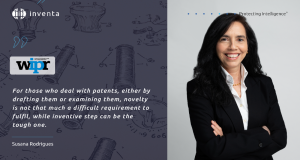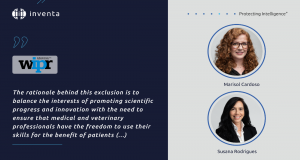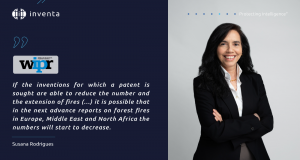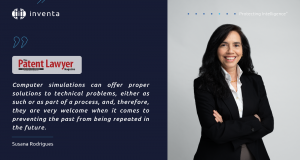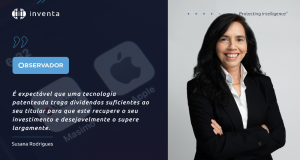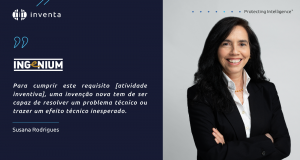Our Team
Susana Rodrigues, Patent Consultant

Quick Biography
Susana Rodrigues, Patent Consultant
Patent Consultant at Inventa. She works mainly in applications for registration, drafting and replying to notifications of patents in areas such as physics, materials processing, and computer-implemented inventions.
Email SusanaDetails
More information about Susana Rodrigues
Languages
- English
- Portuguese
- French
- Spanish
Admissions & Education
- Master of Science in Physics Engineering from School of Science and Technology of the NOVA University of Lisbon.
Experience & Skills
- Patent Drafting
- Patent Strategy
- Patent Prosecution
- Patent Internacionalization
- Translation of Patent applications
Related news
Get in touch
Send a message to Susana
Territory List
There are no results for your search.
- Africa
- Algeria
- Angola
- Benin
- Botswana
- Burkina Faso
- Burundi
- Cameroon
- Cape Verde
- Central African Republic
- Chad
- Comoros
- Congo (Republic)
- Côte d'Ivoire
- Democratic Republic of the Congo
- Djibouti
- Egypt
- Equatorial Guinea
- Eritrea
- Eswatini (Swaziland)
- Ethiopia
- Gabon
- Gambia
- Ghana
- Guinea
- Guinea-Bissau
- Kenya
- Lesotho
- Liberia
- Libya
- Madagascar
- Malawi
- Mali
- Mauritania
- Mauritius
- Mayotte
- Morocco
- Mozambique
- Namibia
- Niger
- Nigeria
- Réunion
- Rwanda
- Sao Tome and Principe
- Senegal
- Seychelles
- Sierra Leone
- Somalia
- South Africa
- South Sudan
- Sudan
- Tanzania (mainland)
- Togo
- Tunisia
- Uganda
- Western Sahara
- Zambia
- Zanzibar
- Zimbabwe
- Africa (OAPI)
- Africa (ARIPO)
- Other
- East Timor
- Macao
- Maldives
- Portugal
- European Patent (EPO)
- European Union Trademark (EUTM)
- International Trademark (Madrid System)
- Patent Cooperation Treaty (PCT)

